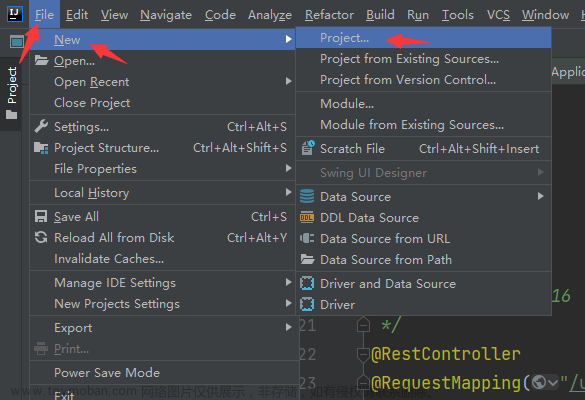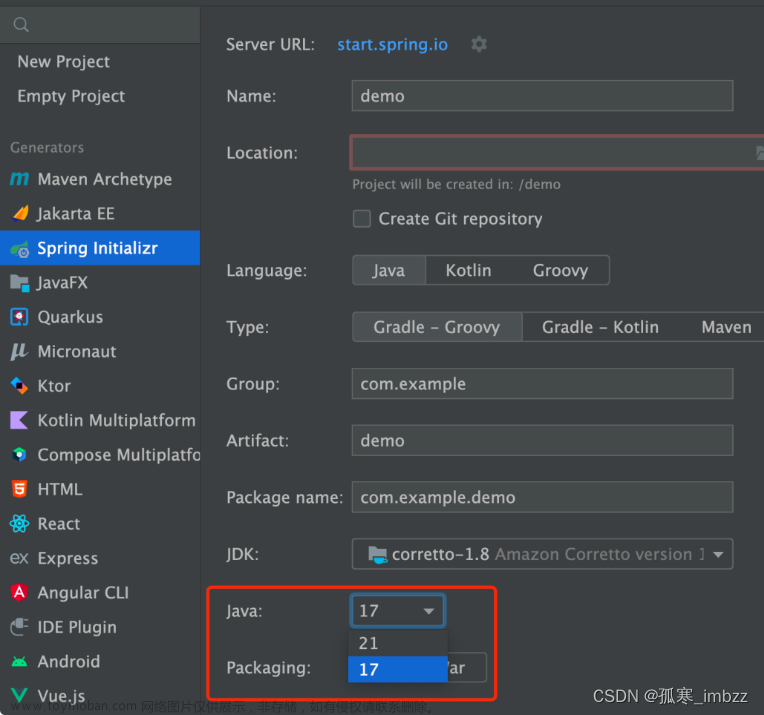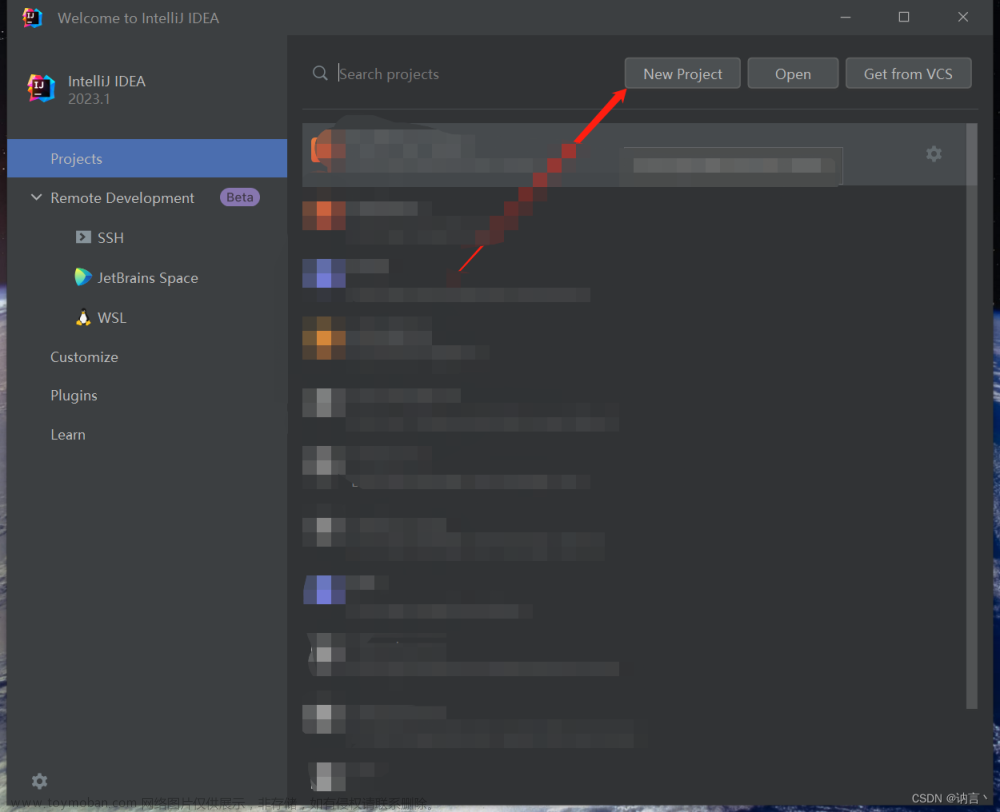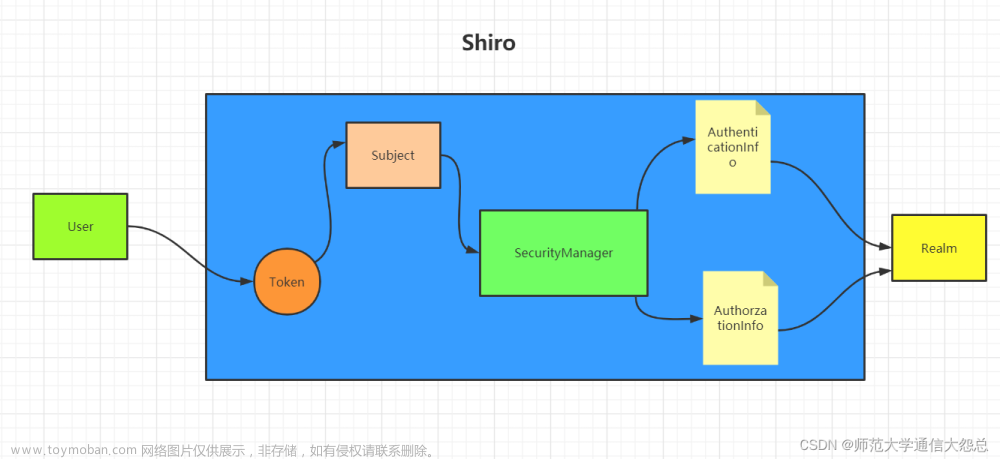SpringApplication
By default, INFO logging messages are shown, including some relevant startup details, such as the user that launched the application.
Lazy Initialization
When lazy initialization is enabled, beans are created as they are needed rather than during application startup.
spring.main.lazy-initialization=true@Lazy(false) annotation:disable lazy initialization for certain beans
Customizing the Banner
adding a banner.txt file to your classpath or by setting the spring.banner.location property to the location of such a file. If the file has an encoding other than UTF-8, you can set spring.banner.charset.
SpringApplication.setBanner(…) method
spring.main.banner-mode property System.out(console)、logger (log)、not produced at all (off)
The printed banner is registered as a singleton bean under the following name: springBootBanner.
Customizing SpringApplication
import org.springframework.boot.Banner;
import org.springframework.boot.SpringApplication;
import org.springframework.boot.autoconfigure.SpringBootApplication;
@SpringBootApplication
public class MyApplication {
public static void main(String[] args) {
SpringApplication application = new SpringApplication(MyApplication.class);
application.setBannerMode(Banner.Mode.OFF);
application.run(args);
}
}The internal state of Spring Boot applications is mostly represented by the Spring ApplicationContext.
Internally, Spring Boot uses events to handle a variety of tasks. Application events are sent in the following order, as your application runs:
-
An
ApplicationStartingEventis sent at the start of a run but before any processing, except for the registration of listeners and initializers. -
An
ApplicationEnvironmentPreparedEventis sent when theEnvironmentto be used in the context is known but before the context is created. -
An
ApplicationContextInitializedEventis sent when theApplicationContextis prepared and ApplicationContextInitializers have been called but before any bean definitions are loaded. -
An
ApplicationPreparedEventis sent just before the refresh is started but after bean definitions have been loaded. -
An
ApplicationStartedEventis sent after the context has been refreshed but before any application and command-line runners have been called. -
An
AvailabilityChangeEventis sent right after withLivenessState.CORRECTto indicate that the application is considered as live. -
An
ApplicationReadyEventis sent after any application and command-line runners have been called. -
An
AvailabilityChangeEventis sent right after withReadinessState.ACCEPTING_TRAFFICto indicate that the application is ready to service requests. -
An
ApplicationFailedEventis sent if there is an exception on startup.
Accessing Application Arguments
import java.util.List;
import org.springframework.boot.ApplicationArguments;
import org.springframework.stereotype.Component;
@Component
public class MyBean {
public MyBean(ApplicationArguments args) {
boolean debug = args.containsOption("debug");
List<String> files = args.getNonOptionArgs();
if (debug) {
System.out.println(files);
}
// if run with "--debug logfile.txt" prints ["logfile.txt"]
}
}If you need to run some specific code once the SpringApplication has started, you can implement the ApplicationRunner or CommandLineRunner interfaces.
import org.springframework.boot.CommandLineRunner;
import org.springframework.stereotype.Component;
@Component
public class MyCommandLineRunner implements CommandLineRunner {
@Override
public void run(String... args) {
// Do something...
}
}Application Exit
Each SpringApplication registers a shutdown hook with the JVM to ensure that the ApplicationContext closes gracefully on exit.
Externalized Configuration
Sources are considered in the following order:
-
Default properties (specified by setting
SpringApplication.setDefaultProperties). -
@PropertySourceannotations on your@Configurationclasses. Please note that such property sources are not added to theEnvironmentuntil the application context is being refreshed. This is too late to configure certain properties such aslogging.*andspring.main.*which are read before refresh begins. -
Config data (such as
application.propertiesfiles). -
A
RandomValuePropertySourcethat has properties only inrandom.*. -
OS environment variables.
-
Java System properties (
System.getProperties()). -
JNDI attributes from
java:comp/env. -
ServletContextinit parameters. -
ServletConfiginit parameters. -
Properties from
SPRING_APPLICATION_JSON(inline JSON embedded in an environment variable or system property). -
Command line arguments.
-
propertiesattribute on your tests. Available on@SpringBootTestand the test annotations for testing a particular slice of your application. -
@DynamicPropertySourceannotations in your tests. -
@TestPropertySourceannotations on your tests. -
Devtools global settings properties in the
$HOME/.config/spring-bootdirectory when devtools is active.
Config data files are considered in the following order:
-
Application properties packaged inside your jar (
application.propertiesand YAML variants). -
Profile-specific application properties packaged inside your jar (
application-{profile}.propertiesand YAML variants). -
Application properties outside of your packaged jar (
application.propertiesand YAML variants). -
Profile-specific application properties outside of your packaged jar (
application-{profile}.propertiesand YAML variants).
If you have configuration files with both .propertiesand YAML format in the same location, .properties takes precedence.
读取配置:
Property values can be injected directly into your beans by using the @Value annotation, accessed through Spring’s Environmentabstraction, or be bound to structured objects through @ConfigurationProperties.
import org.springframework.beans.factory.annotation.Value;
import org.springframework.stereotype.Component;
@Component
public class MyBean {
@Value("${name}")
private String name;
// ...
}command line properties (that is, arguments starting with --, such as --server.port=9000) always take precedence over file-based property sources.
Spring Boot will automatically find and load application.properties and application.yaml files from the following locations when your application starts:
-
From the classpath
-
The classpath root
-
The classpath
/configpackage
-
-
From the current directory
-
The current directory
-
The
config/subdirectory in the current directory -
Immediate child directories of the
config/subdirectory
-
Wildcard locations only work with external directories. You cannot use a wildcard in a classpath: location.
Profile Specific Files
application-{profile}. For example, if your application activates a profile named prod and uses YAML files, then both application.yaml and application-prod.yaml will be considered.
configtree:
etc/
config/
myapp/
username
passwordspring.config.import=optional:configtree:/etc/config/You can then access or inject myapp.username and myapp.password properties from the Environment in the usual way.
Property placeholders can also specify a default value using a : to separate the default value from the property name, for example ${name:default}.
app.name=MyApp
app.description=${app.name} is a Spring Boot application written by ${username:Unknown}Working With YAML
If you use “Starters”, SnakeYAML is automatically provided by spring-boot-starter.
YAML files cannot be loaded by using the
@PropertySourceor@TestPropertySourceannotations. So, in the case that you need to load values that way, you need to use a properties file.
The YamlPropertiesFactoryBeanloads YAML as Properties and the YamlMapFactoryBean loads YAML as a Map. YamlPropertySourceLoader class if you want to load YAML as a Spring PropertySource.
Configuring Random Values
RandomValuePropertySource
my.secret=${random.value}
my.number=${random.int}
my.bignumber=${random.long}
my.uuid=${random.uuid}
my.number-less-than-ten=${random.int(10)}
my.number-in-range=${random.int[1024,65536]}Type-safe Configuration Properties
@ConfigurationProperties
Relaxed Binding
As an example, consider the following @ConfigurationProperties class:
import org.springframework.boot.context.properties.ConfigurationProperties;
@ConfigurationProperties(prefix = "my.main-project.person")
public class MyPersonProperties {
private String firstName;
public String getFirstName() {
return this.firstName;
}
public void setFirstName(String firstName) {
this.firstName = firstName;
}
}With the preceding code, the following properties names can all be used:
-
my.main-project.person.first-nameKebab case, which is recommended for use in.propertiesand YAML files. -
my.main-project.person.firstNameStandard camel case syntax. -
my.main-project.person.first_nameUnderscore notation, which is an alternative format for use in.propertiesand YAML files. -
MY_MAINPROJECT_PERSON_FIRSTNAMEUpper case format, which is recommended when using system environment variables.
We recommend that, when possible, properties are stored in lower-case kebab format, such as my.person.first-name=Rod.
Profiles
make it be available only in certain environments
import org.springframework.context.annotation.Configuration;
import org.springframework.context.annotation.Profile;
@Configuration(proxyBeanMethods = false)
@Profile("production")
public class ProductionConfiguration {
// ...
}Logging
By default, if you use the “Starters”, Logback is used for logging.
Log Format
2023-06-22T12:08:05.861Z INFO 22768 --- [ main] o.s.b.d.f.s.MyApplication : Starting MyApplication using Java 17.0.7 with PID 22768 (/opt/apps/myapp.jar started by myuser in /opt/apps/)
2023-06-22T12:08:05.872Z INFO 22768 --- [ main] o.s.b.d.f.s.MyApplication : No active profile set, falling back to 1 default profile: "default"
2023-06-22T12:08:09.854Z INFO 22768 --- [ main] o.s.b.w.embedded.tomcat.TomcatWebServer : Tomcat initialized with port(s): 8080 (http)
2023-06-22T12:08:09.892Z INFO 22768 --- [ main] o.apache.catalina.core.StandardService : Starting service [Tomcat]
2023-06-22T12:08:09.892Z INFO 22768 --- [ main] o.apache.catalina.core.StandardEngine : Starting Servlet engine: [Apache Tomcat/10.1.10]
2023-06-22T12:08:10.160Z INFO 22768 --- [ main] o.a.c.c.C.[Tomcat].[localhost].[/] : Initializing Spring embedded WebApplicationContext
2023-06-22T12:08:10.162Z INFO 22768 --- [ main] w.s.c.ServletWebServerApplicationContext : Root WebApplicationContext: initialization completed in 4038 ms
2023-06-22T12:08:11.512Z INFO 22768 --- [ main] o.s.b.w.embedded.tomcat.TomcatWebServer : Tomcat started on port(s): 8080 (http) with context path ''
2023-06-22T12:08:11.534Z INFO 22768 --- [ main] o.s.b.d.f.s.MyApplication : Started MyApplication in 7.251 seconds (process running for 8.584)-
Date and Time: Millisecond precision and easily sortable.
-
Log Level:
ERROR,WARN,INFO,DEBUG, orTRACE. -
Process ID.
-
A
---separator to distinguish the start of actual log messages. -
Thread name: Enclosed in square brackets (may be truncated for console output).
-
Logger name: This is usually the source class name (often abbreviated).
-
The log message.
Internationalization
spring.messages.basename=messages,config.i18n.messages
spring.messages.fallback-to-system-locale=falseJSON
Jackson is the preferred and default library. Auto-configuration for Jackson is provided and Jackson is part of spring-boot-starter-json.
@JsonComponent Custom Serializers and Deserializers
import java.io.IOException;
import com.fasterxml.jackson.core.JsonGenerator;
import com.fasterxml.jackson.core.JsonParser;
import com.fasterxml.jackson.core.ObjectCodec;
import com.fasterxml.jackson.databind.DeserializationContext;
import com.fasterxml.jackson.databind.JsonDeserializer;
import com.fasterxml.jackson.databind.JsonNode;
import com.fasterxml.jackson.databind.JsonSerializer;
import com.fasterxml.jackson.databind.SerializerProvider;
import org.springframework.boot.jackson.JsonComponent;
@JsonComponent
public class MyJsonComponent {
public static class Serializer extends JsonSerializer<MyObject> {
@Override
public void serialize(MyObject value, JsonGenerator jgen, SerializerProvider serializers) throws IOException {
jgen.writeStartObject();
jgen.writeStringField("name", value.getName());
jgen.writeNumberField("age", value.getAge());
jgen.writeEndObject();
}
}
public static class Deserializer extends JsonDeserializer<MyObject> {
@Override
public MyObject deserialize(JsonParser jsonParser, DeserializationContext ctxt) throws IOException {
ObjectCodec codec = jsonParser.getCodec();
JsonNode tree = codec.readTree(jsonParser);
String name = tree.get("name").textValue();
int age = tree.get("age").intValue();
return new MyObject(name, age);
}
}
}Task Execution and Scheduling
In the absence of an Executor bean in the context, Spring Boot auto-configures a ThreadPoolTaskExecutor with sensible defaults that can be automatically associated to asynchronous task execution (@EnableAsync) and Spring MVC asynchronous request processing.
A ThreadPoolTaskScheduler can also be auto-configured if need to be associated to scheduled task execution (using @EnableScheduling for instance).
Testing
Most developers use the spring-boot-starter-test “Starter”, which imports both Spring Boot test modules as well as JUnit Jupiter, AssertJ, Hamcrest, and a number of other useful libraries.
-
JUnit 5: The de-facto standard for unit testing Java applications.
-
Spring Test & Spring Boot Test: Utilities and integration test support for Spring Boot applications.
-
AssertJ: A fluent assertion library.
-
Hamcrest: A library of matcher objects (also known as constraints or predicates).
-
Mockito: A Java mocking framework.
-
JSONassert: An assertion library for JSON.
-
JsonPath: XPath for JSON.
One of the major advantages of dependency injection is that it should make your code easier to unit test. You can instantiate objects by using the new operator without even involving Spring. You can also use mock objects instead of real dependencies.
By default, @SpringBootTest will not start a server. You can use the webEnvironment attribute of @SpringBootTest to further refine how your tests run:
-
MOCK(Default) : Loads a webApplicationContextand provides a mock web environment. Embedded servers are not started when using this annotation. If a web environment is not available on your classpath, this mode transparently falls back to creating a regular non-webApplicationContext. It can be used in conjunction with@AutoConfigureMockMvcor@AutoConfigureWebTestClientfor mock-based testing of your web application. -
RANDOM_PORT: Loads aWebServerApplicationContextand provides a real web environment. Embedded servers are started and listen on a random port. -
DEFINED_PORT: Loads aWebServerApplicationContextand provides a real web environment. Embedded servers are started and listen on a defined port (from yourapplication.properties) or on the default port of8080. -
NONE: Loads anApplicationContextby usingSpringApplicationbut does not provide any web environment (mock or otherwise).
Docker Compose Support
A compose.yml file is typically created next to your application which defines and configures service containers.
<dependencies>
<dependency>
<groupId>org.springframework.boot</groupId>
<artifactId>spring-boot-docker-compose</artifactId>
<optional>true</optional>
</dependency>
</dependencies>Creating Your Own Auto-configuration
Classes that implement auto-configuration are annotated with @AutoConfiguration.
SSL
spring.ssl.bundle.jks.mybundle.key.alias=application
spring.ssl.bundle.jks.mybundle.keystore.location=classpath:application.p12
spring.ssl.bundle.jks.mybundle.keystore.password=secret
spring.ssl.bundle.jks.mybundle.keystore.type=PKCS12参考资料:文章来源:https://www.toymoban.com/news/detail-588231.html
https://docs.spring.io/spring-boot/docs/current/reference/htmlsingle/#features文章来源地址https://www.toymoban.com/news/detail-588231.html
到了这里,关于SpringBoot官方笔记3核心的文章就介绍完了。如果您还想了解更多内容,请在右上角搜索TOY模板网以前的文章或继续浏览下面的相关文章,希望大家以后多多支持TOY模板网!










